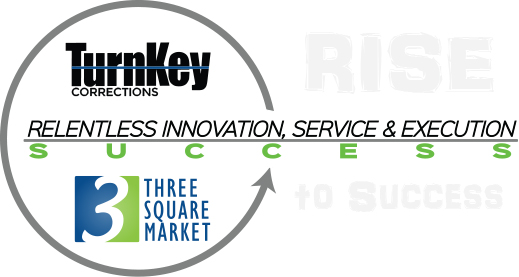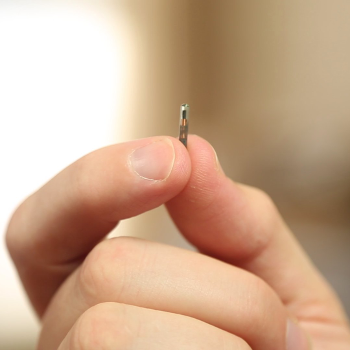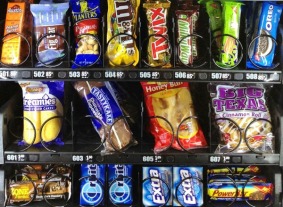Here’s another blog we love! We hope you love it too …
10 Reasons Why a Micro Market is Better than a Cafeteria
1. It’s Employee Paid. Offering food and drinks to employees is a powerful benefit for companies looking to attract and retain good quality workers. However, food budgets can be hard to prove return on investment for in some areas. The retiring of the foodservice decision maker or an uncertain corporate climate can affect cafeterias, cafes and pantry service. The new person or board might feel the money would be better spent elsewhere. Conversely, because the capital outlay by the location for a micro market is zero, it is less affected by budgets and executives.
2. It’s Grab and Go. At work, people are searching for quick, convenient eating options. There is more snacking and fewer sit down meals during a workday, which means micro markets are a great option. The service is 24-7, giving everyone the flexibility to snack when they need an energy boost and everything is prepackaged for easy shopping of ingredients.
3. It’s Fewer Upfront Costs. Cafeterias require a number of additional upfront costs including grills, washing stations, food temperature logs, walk-in coolers, etc. Micro markets are much simpler, with a comparatively low upfront equipment cost. A micro market needs a few coolers, shelving, a kiosk and internet connection. Any add-ons can be discussed with the location and purchased by them to add that positive employee experience they want to create in the space.
4. It Allows Bulk Buying. Since micro markets use so many prepackaged products that can be used in vending and other markets, it increases the volume of items operators order, allowing them to get better pricing from the suppliers. A great purchasing manager can also work to take advantage of special offers and rebates. This can enable micro market operators to tie in better-priced products to on-site promotions that will drive sales at each location.
5. It Offers Cost Balance. While fresh food is a key component of both cafeterias and micro markets, cafeterias rely more heavily on their food offerings. Food means waste and a smaller margin. Micro markets, on the other hand, allow operators to provide a good mix of food options and shelf-stable products, such as bagged breakfast items and treats. Micro markets can even include non-edibles options that employees crave, such as small electronics or smartphone chargers.
6. It Serves A Wider Range Of Locations. Unlike cafeterias that require a few hundred employees on site, a micro market can be successful with between 100 to 200. It’s a much more flexible option with what type of checkout is available, including full, freestanding kiosks to small, tablet-based checkout that can be placed on a counter next to a small shelf and cooler combo. Micro markets also work in a broad range of businesses from manufacturing to offices.
7. It Requires No Additional Staff Onsite. Having a cafeteria means having staff on site. From cooks to cashiers, it’s more people to hire, train and manage. Comparatively, a micro market requires a route driver and support staff, people who are already on the payroll at an operation. There is no staff required to keep it open, yet a micro market offers more hours of operation to the employees making it a worthwhile benefit.
8. It Includes Supported Marketing Efforts.Consumers love getting a deal, especially when it’s a product they enjoy eating. With new features being added by micro market suppliers, promotions, special pricing, and loyalty programs are easier than ever to schedule. Many micro markets have built-in programs operators can simply turn on and off. Others have special relationships with suppliers for great partnerships. Either way, micro markets make marketing easier and more engaging with customer-focused apps and interactive touchscreens.
9. It Means No Waiting In Line. Everything is made ahead of time and prepackaged, eliminating lines of people waiting to order or for their items to be cooked. Micro market customers can just browse the selections and make a purchase. Many even offer mobile checkout apps to eliminate
the queue at the kiosk. It also encourages repeat business during the day. After all, it’s much more inviting to purchase a pack of gum in the afternoon if you know it will be a quick checkout than waiting in line for the cashier to ring up other employees.
10. It Requires A Smaller Footprint. Unlike cafes and cafeterias that need food prep and storage areas, micro markets are all about product display and sales. The configuration, number of coolers, kiosk placement, type of shelving and even how the equipment is powered is flexible. It’s a solution that adapts to locations large or small much more easily than a foodservice solution. It’s scalable as well – a solution that can grow with a company.




















 this? or THIS!
this? or THIS!
 this? or THIS!
this? or THIS!
 this? or THIS!
this? or THIS!









